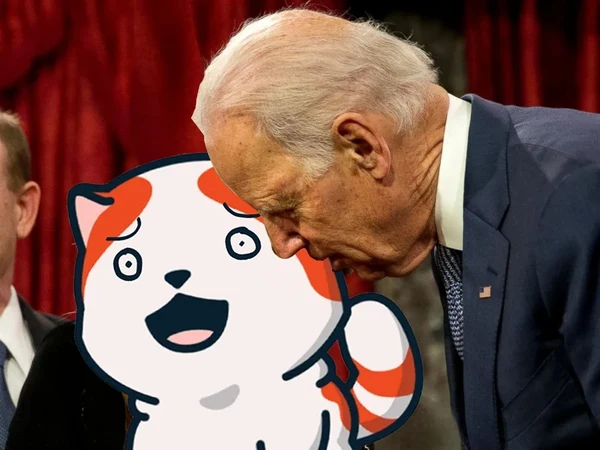One thing Myspace had going for it: it was exuberantly ugly. The decision to let users with no design training loose on a highly customizable user-interface led to a proliferation of Myspace pages that vibrated with personality.
The ugliness of Myspace wasn't just exciting in a kind of outsider/folk-art way (though it was that). Myspace's ugliness was an anti-cooption force-field, because corporate designers and art-directors would, by and large, rather break their fingers and gouge out their eyes than produce pages that looked like that.
In this regard, Myspace was the heir to successive generations of "design democratization" that gave amateur communities, especially countercultural ones, a space to operate in where authentic community members could be easily distinguished between parasitic commercializers.
The immediate predecessors to Myspace's ugliness-as-a-feature were the web, and desktop publishing. Between the img tag, imagemaps, the blink tag, animated GIFs, and the million ways that you could weird a page with tables and padding, the early web was positively bursting with individual personality. The early web balanced in an equilibrium between the plunder-friendliness of "view source" and the topsy-turvy design imperatives of web-based layout, which confounded both print designers (no fixed fonts! RGB colorspaces! dithering!) and even multimedia designers who'd cut their teeth on Hypercard and CD ROMs (no fixed layout!).
Before the web came desktop publishing, the million tractor-feed ransom notes combining Broderbund Print Shop fonts, joystick-edited pixel-art, and a cohort of enthusiasts ranging from punk zinesters to community newsletter publishers. As this work proliferated on coffee-shop counters and telephone poles, it was visibly, obviously distinct from the work produced by "real" designers - that is, designers who'd been a) trained and b) paid by a corporation to employ that training.
All of this matters, and not just for aesthetic reasons. Communities - especially countercultural ones - are where our society's creative ferment starts. Getting your start in the trenches of the counterculture wars is no proof against being co-opted later (indeed, many of the designers who cut their teeth desktop publishing weird zines went on to pull their hair and roll their eyes at the incredible fuggliness of the web). But without that zone of noncommercial, antiestablishment, communitarian low weirdness, design and culture would stagnate.
I started thinking about this 25 years ago, the first time I met William Gibson. I'd been assigned by the Globe and Mail to interview him for the launch of All Tomorrow's Parties:
https://craphound.com/nonfic/transcript.html
One of the questions I asked was about his famous aphorism, "The street finds its own use for things." Given how quickly each post-punk tendency had been absorbed by commercial culture, couldn't we say that "Madison Avenue finds its own use for the street"? His answer started me down a quarter-century of thinking and writing about this subject:
I worry about what we'll do in the future, [about the instantaneous co-opting of pop culture]. Where is our new stuff going to come from? What we're doing pop culturally is like burning the rain forest. The biodiversity of pop culture is really, really in danger. I didn't see it coming until a few years ago, but looking back it's very apparent.
I watch a sort of primitive form of the recommodification machine around my friends and myself in sixties, and it took about two years for this clumsy mechanism to get and try to sell us The Monkees.
In 1977, it took about eight months for a slightly faster more refined mechanism to put punk in the window of Holt Renfrew. It's gotten faster ever since. The scene in Seattle that Nirvana came from: as soon as it had a label, it was on the runways of Paris.
Ugliness, transgressiveness and shock all represent an incoherent, grasping attempt to keep the world out of your demimonde - not just normies and squares, but also and especially enthusiastic marketers who want to figure out how to sell stuff to you, and use you to sell stuff to normies and squares.
I think this is what drove a lot of people to 4chan (remember, before 4chan was famous for incubating neofascism, it was the birthplace of Anonymous): its shock culture, combined with a strong cultural norm of anonymity, made for a difficult-to-digest, thoroughly spiky morsel that resisted recommodification (for a while).
All of this brings me to AI art (or AI "art"). In his essay on the "eerieness" of AI art, Henry Farrell quotes Mark Fisher's "The Weird and the Eerie":
https://www.programmablemutter.com/p/large-language-models-are-uncanny
"Eeriness" here is defined as "when there is something present where there should be nothing, or is there is nothing present when there should be something." AI is eerie because it produces the seeming of intent, without any intender:
https://pluralistic.net/2024/05/13/spooky-action-at-a-close-up/#invisible-hand
When we contemplate "authentic" countercultural work - ransom-note DTP, the weird old web, seizure-inducing Myspace GIFs - it is arresting because the personality of the human entity responsible for it shines through. We might be able to recognize where that person ganked their source-viewed HTML or pixel-optimized GIF, but we can also make inferences about the emotional meaning of those choices. To see that work is to connect to a mind. That mind might not necessarily belong to someone you want to be friends with or ever meet in person, but it is unmistakably another person, and you can't help but learn something about yourself from the way that their work makes you feel.
This is why corporate work is so often called "soulless." The point of corporate art is to dress the artificial person of the corporation in the stolen skins of the humans it uses as its substrate. Corporations are potentially immortal, artificial colony organisms. They maintain the pretense of personality, but they have no mind, only action that is the crescendo of an orchestra of improvised instruments played by hundreds or thousands of employees and a handful of executives who are often working directly against one another:
https://locusmag.com/2022/03/cory-doctorow-vertically-challenged/
The corporation is - as Charlie Stross has it - the "slow AI" that is slowly converting our planet to the long-prophesied grey goo (or, more prosaically, wildfire ashes and boiled oceans). The real thing that is signified by CEOs' professed fears of runaway AI is runaway corporations. As Ted Chiang says, the experience of being nominally in charge of a corporation that refuses to do what you tell it to is the kind of thing that will give you nightmares about autonomous AI turning on its masters:
The job of corporate designers is to find the signifiers of authenticity and dress up the corporate entity's robotic imperatives in this stolen flesh. Everything about AI is done in service to this goal: the chatbots that replace customer service reps are meant to both perfectly mimic a real, competent corporate representative while also hewing perfectly to corporate policy, without ever betraying the real human frailties that none of us can escape.
In the same way, the shillbots that pretend to be corporate superfans online are supposed to perfectly amplify the corporate message, the slow AI's conception of its own virtues, without injecting their own off-script, potentially cringey enthusiasms.
The Hollywood writers' strike was, at root, about the studio execs' dream that they could convert the "insights" of focus groups and audience research into a perfect script, without having to go through a phalanx of lippy screenwriters who insisted on explaining why they think your idea is stupid. "Hey, nerd, make me another ET, except make the hero a dog, and set it on Mars" is exactly how you prompt an AI:
https://pluralistic.net/2023/08/20/everything-made-by-an-ai-is-in-the-public-domain/
Corporate design's job is to produce the seeming of intention without any intender. The "personality" we're meant to sense when we encounter corporate design isn't the designer's, nor the art director's, nor even the CEO's. The "personality" is meant to be the slow AI's, but a corporation doesn't have a personality.
In his 2018 short story "Noon in the antilibrary," Karl Schroeder describes an "antilibrary" as an endlessly deep anaerobic lagoon of generative botshit:
https://www.technologyreview.com/2018/08/18/104097/noon-in-the-antilibrary/
The antilibrary is a generative AI system that can produce entire librarys'-worth of fake books with fake authors, fake citations by other fake experts with their own fake books and biographies and fake social media accounts, on-demand and instantly. It was speculation in 2018; it's possible now. Creating an antilibrary is just a matter of investing in a sufficient number of graphics cards and electricity.
https://kschroeder.substack.com/p/after-the-internet
Reading Karl's reflections on the antilibrary crystallized something for me that I've been thinking about for a quarter-century, since I interviewed Gibson at the Penguin offices in north Toronto. It snapped something into place that I've trying to fit since encountering Henry's thoughts on the "eeriness" of AI work and the intent without an intender.
It made me realize why I dislike AI art so much, on a deep, aesthetic level. The point of an image generator is to buffer the intention of the prompter (which might be genuinely creative and bursting with personality) in layers of automated decision-making that flense the final product of any hint of the mind that caused its creation.
The most febrile, deeply weird and authentic prompts of the most excluded outsiders produce images that feel the same as the corporate AI illustrations that project the illusion of personality from the immortal, transhuman colony organism that is the limited liability corporation.
AI art is born coopted. Even the 4chan equivalent of AI - the deeply transgressive and immoral nonconsensual pornography - feels no different from the "official" AI porn churned out by "real" pornographers. "Shrimp Jesus" and other SEO-optimized Facebook slop is so uncanny because it is simultaneously "weird" ("that which does not belong") and yet it belongs in the same aesthetic bucket of the most anodyne Corporate Memphis ephemera:
https://en.wikipedia.org/wiki/Corporate_Memphis
We call it "generative" but AI art can't generate the kind of turnover that aerates the aesthetic soil. An artform that can't be transgressive is sterile, stillborn, a dead end.
——
This work – excluding any serialized fiction – is licensed under a Creative Commons Attribution 4.0 license. That means you can use it any way you like, including commercially, provided that you attribute it to me, Cory Doctorow, and include a link to pluralistic.net.
https://creativecommons.org/licenses/by/4.0/
Quotations and images are not included in this license; they are included either under a limitation or exception to copyright, or on the basis of a separate license. Please exercise caution.







Jump in the discussion.
No email address required.
This guy has absolutely no idea what he's on about
Jump in the discussion.
No email address required.
What is your skin color?
Jump in the discussion.
No email address required.
C*m
Jump in the discussion.
No email address required.
More options
Context
More options
Context
something is dying
<article>in 1695 i talked to sir ninefold von garmolf and he said a thing
<article>i made up a new word here
<article>more schizo nonsense
<article>this is why new word is real
</article></article></article></article>Jump in the discussion.
No email address required.
More options
Context
This is everything he writes
Jump in the discussion.
No email address required.
More options
Context
More options
Context